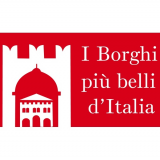
 I borghi più belli d'Italia
I borghi più belli d'Italia
Italian little Italies: Norcia, The Sacred and the Profane
- WTI Magazine #176 Jun 23, 2024
-

 I borghi più belli d'Italia
I borghi più belli d'Italia
The historic core of Norcia is enclosed by 13th-century walls which form a unique heart shape. Along the perimeter the eight ancient village gates can be seen, which have preserved the names and characteristics of the past, together with the medieval towers. Entering from the Roman Gate and walking along the 19th-century Corso Sertorio, the visitor reaches the main square, dedicated of course to Saint Benedict.
Here the village´s most important buildings overlook the statue honouring Norcia´s most illustrious son (1880, sculpted by Giuseppe Prinzi). The Palazzo Comunale, or Town hall, constructed in the 13th century, was restored in various different periods because of the frequent earthquakes. Of the 13th-century construction there remains the portico, with its short, stout columns, while the upper part took on its current aspect after the earthquake of 1859.
On the right side of the Palazzo Comunale stands the Basilica of San Benedetto, which has a 14th-century gabled façade in Gothic style. With its lovely portal bordered by clusters of small columns, the basilica rises above the ruins of a 1st-2nd-century Roman edifice, identified by tradition as the home where St. Benedict was born.
The interior, with its Latin-cross plan, has undergone various alterations over the centuries, and does not adhere to a specific style: Romanesque, Gothic and Baroque elements are mixed together. Half-way along the nave, via two lateral stairways, the visitor can enter the crypt, which contains the remains of the Roman edifice dating to the 1st-2nd centuries AD. The Portico of Measurements was set against the right-hand side of the church around 1570 in order to create a sort of open market for grain.
The fortress occupying the entire western side of the square, called Castellina, was a fortified residence for the papal governors. Prefects appointed by Rome established themselves here in 1569, with jurisdiction over a vast territory known as the Mountain Prefecture. Begun in 1554, the edifice was designed by Vignola. The portal, courtyard and stairway to the upper floor are all magnificent. Today the Castellina is the seat of the Civic and Diocesan museum.
Slightly aloof from the square, the Concathedral of Santa Maria Argentea is of very ancient origin. At the time of the Roman empire, on the site where the Castellina currently stands, a temple rose, dedicated to the goddess Fortuna Argentea but converted to the Christian rite in the 3rd century AD. The remains of the ancient parish church can still be seen in the dungeons of the Castellina. The present-day church was constructed between 1556 and 1570 in Renaissance style, with large stone arcs and aristocratic chapels. It presents a simple gabled façade in white stone and an elegant portal with wooden doors dating to 1576. The side portal is Gothic in style (late 14th century) and was made with materials from the demolished parish church. Damaged by earthquake, it was restored in neoclassical style in the 18th century. The interior preserves numerous works of art including the 1494 wooden crucifix by Giovanni Tedesco, a painting by Giuseppe Paladini (1756) and, in the Misericordia chapel, Francesco Duquesnoy´s magnificent altar (1640) and an exquisite 16th-century fresco with the image of the Madonna and Child and Saints Benedict and Scholastica.
In Piazza Garibaldi, the former church of San Francesco is one of the most important examples of Gothic art in the area, with remarkable internal frescoes of the 15th and 16th centuries. The church, heavily damaged by the earthquake of 1859, is the result of the reconstruction carried out by the Franciscans around 1385, the year in which the rose-window on the façade was being executed. The complex of San Francesco now hosts an auditorium, library and municipal historical archive.
Going back towards the higher part of the village, along via Anicia we find the church of Sant´Agostino. Its interior houses wooden baroque altars, a 17th-century walnut choir and interesting votive frescoes on the counter-façade (14th-16th centuries) and in the lateral walls (16th-17th centuries).
In via Umberto, a short distance from via Anicia, the visitor can admire an interesting votive shrine: the Tempietto (Little Temple). It is a small Romanesque-Gothic monument dating to 1354. The work of a local artist, Vanni della Tuccia, it is the best preserved and most original historical edifice in Norcia.
In the Capolaterra quarter, whose cottages with their white façades have almost all been restored, the oratory of Sant´Agostinuccio in piazza Palatina is worth a visit, with its magnificent golden and painted wooden ceiling and 17th-century walnut seats.
Walking around the streets of Norcia, the visitor will encounter numerous aristocratic palaces constructed by the town´s wealthier families, with interesting architectural elements and handicraft masterpieces adorning portals, balconies and windows. Unlike other Umbrian cities, medieval stone does not predominate in Norcia´s civic construction but rather plaster and a mixture of styles, due to the earthquakes which have repeatedly altered Norcia´s appearance.
The 18th-century balconies in wrought iron are splendid (Palazzo Cipriani and Palazzo Accica), as are the rustic stone portals (Palazzo Passerini, Palazzo Coalizzi, Palazzo Seneca), and the internal stairways and halls.
The name
The cult of the goddess Nortia probably spread with the penetration of Etruscan civilisation into the Umbrian and Sabine territories. Called "Nemesis" by the Greeks, she was the goddess of "good luck." In fact the existence in Etruria of a city called Nortia or Norchia has been historically documented.
The product
Norcia is a true gastronomic paradise, where typical products of the highest quality reign. Among these are the prized black truffle (Tuber melanosporum vittadini), the Castelluccio lentil (the best in Italy) and prosciutto, both rewarded with the Protected Geographical Indication, the salami and pork butchery products, cheeses, spelt and other grains, and honey.